Explain :
(a) Ethyl isobutyrate does not undergo Claisen condensation in the presence of NaOEt.
Acetyl chloride is hydrolysed rapidly by water, whereas benzoyl chloride is not.
( c) β−Keto esters are stronger acids than alcohols and esters.
(a) Ester having only one α−H does not undergo Claisen condensation (C.C) with EtONa because the ketoester formed cannot be converted to its enolate anion due to the absence of the second α−H atom. As a result, the equation does not shift to right.
However, in the presence of a very strong base such as Ph3Na, such esters undergo C.C to give β−keto ester because a very strong base acts in two ways.
(i) It withdraws the weak acidic α−H atom irreversily from the ester (analogue C.C mechanim step (i) is highly reversible).
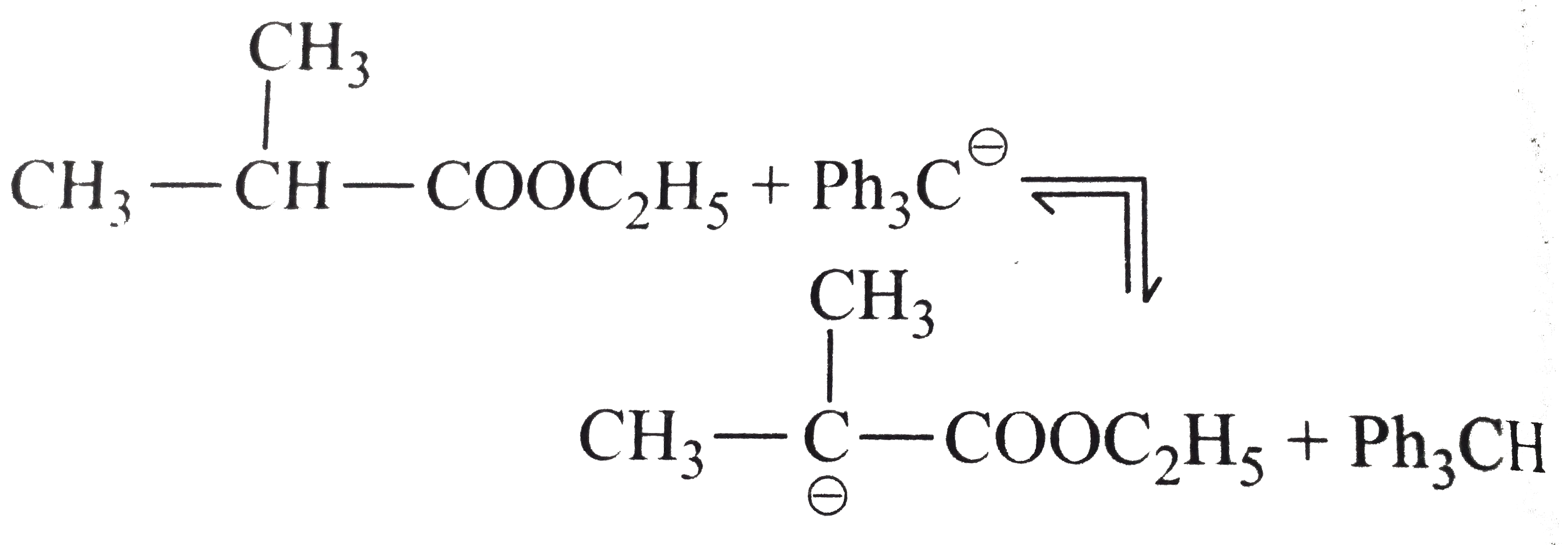 .
.
(ii) It completely removes one of the aqueous products i.e. C2H5OH, so that equation shifts to the right.
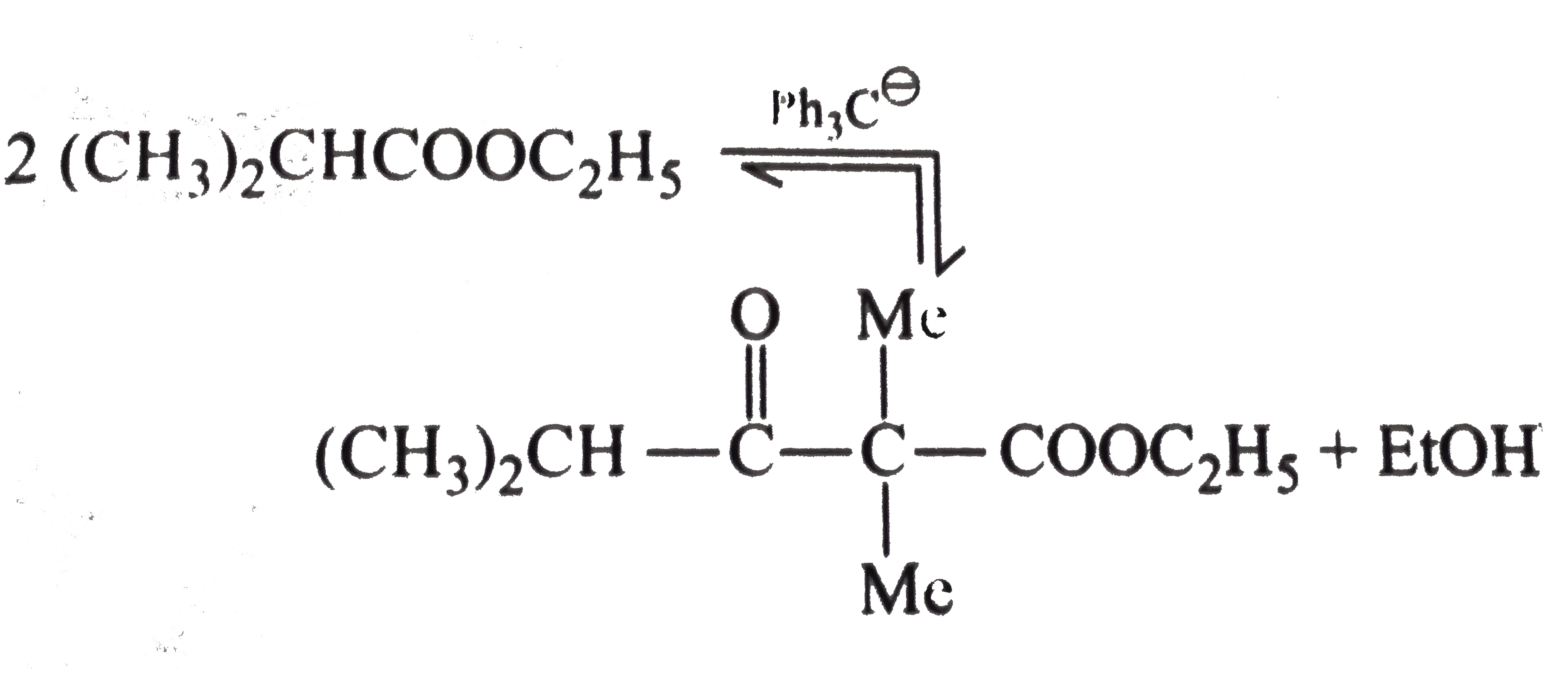
Mechanism of C.C.:
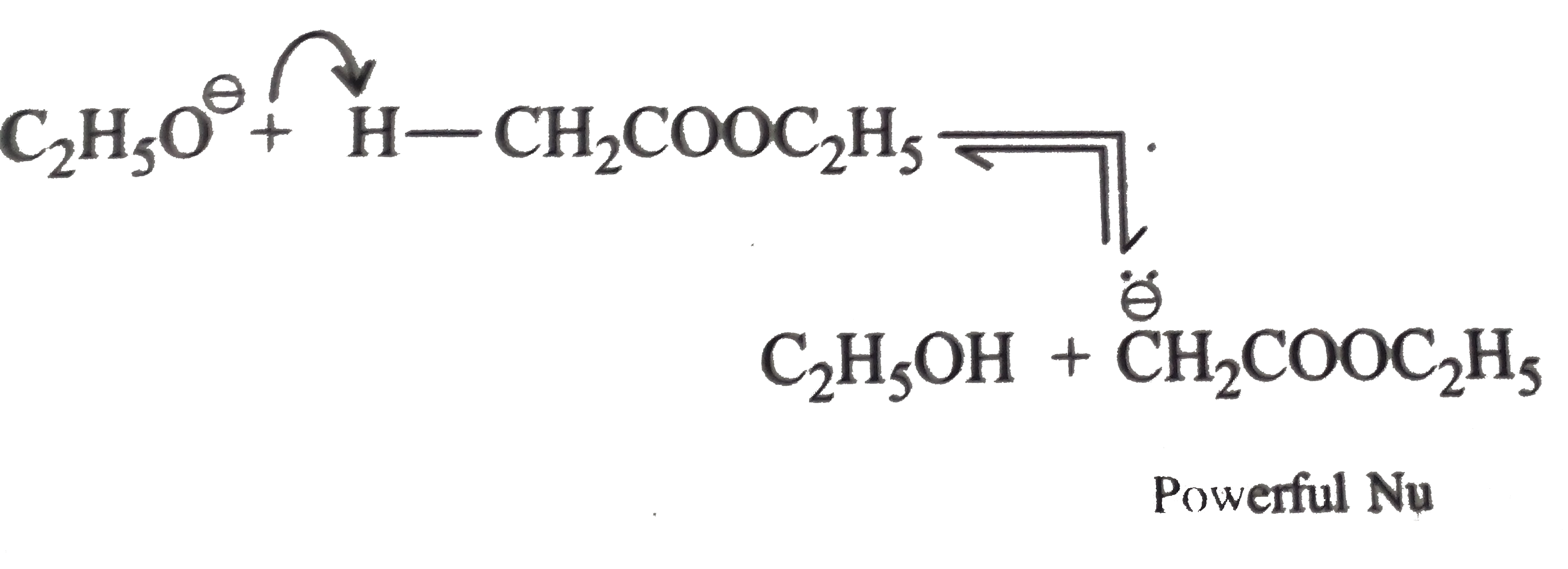
The β−keto ester having an active methylene group is acidic and reacts with C2H4ONa to form enolate (Step (iv)). The subsequent acidification with aq. CH3COOH(1:1) regenerates β−ketoster.
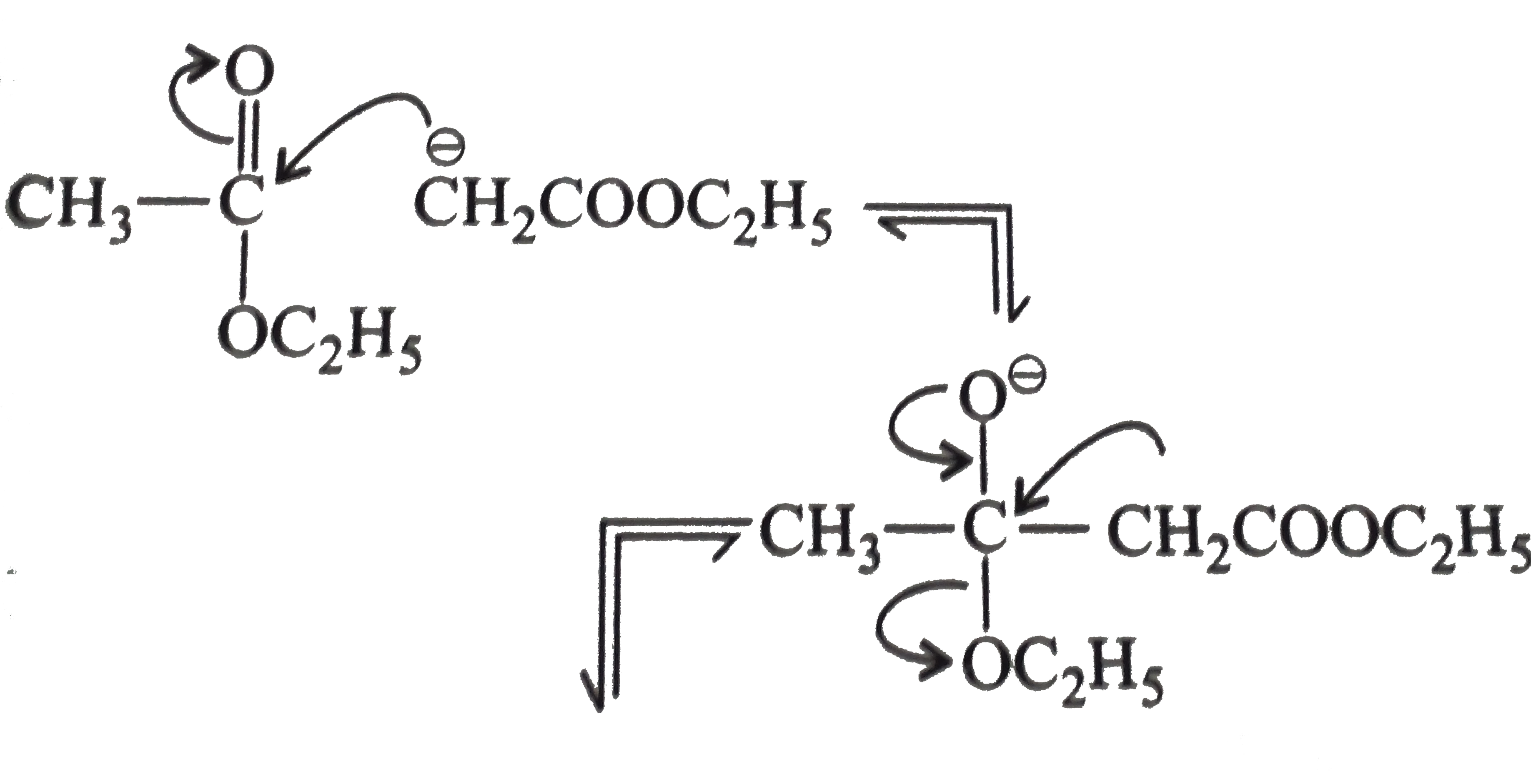
The first three steps are in unfavourable equation state. Hence, excess of C2H5ONa is used to force the equation to shift in the forward direction by the formation of a resonance-stabilished enolate anion [Step(iv))]. This is substantiated by the fact that esters having only one α−H atom do not undergo C.C with C2H5ONa.
(b) 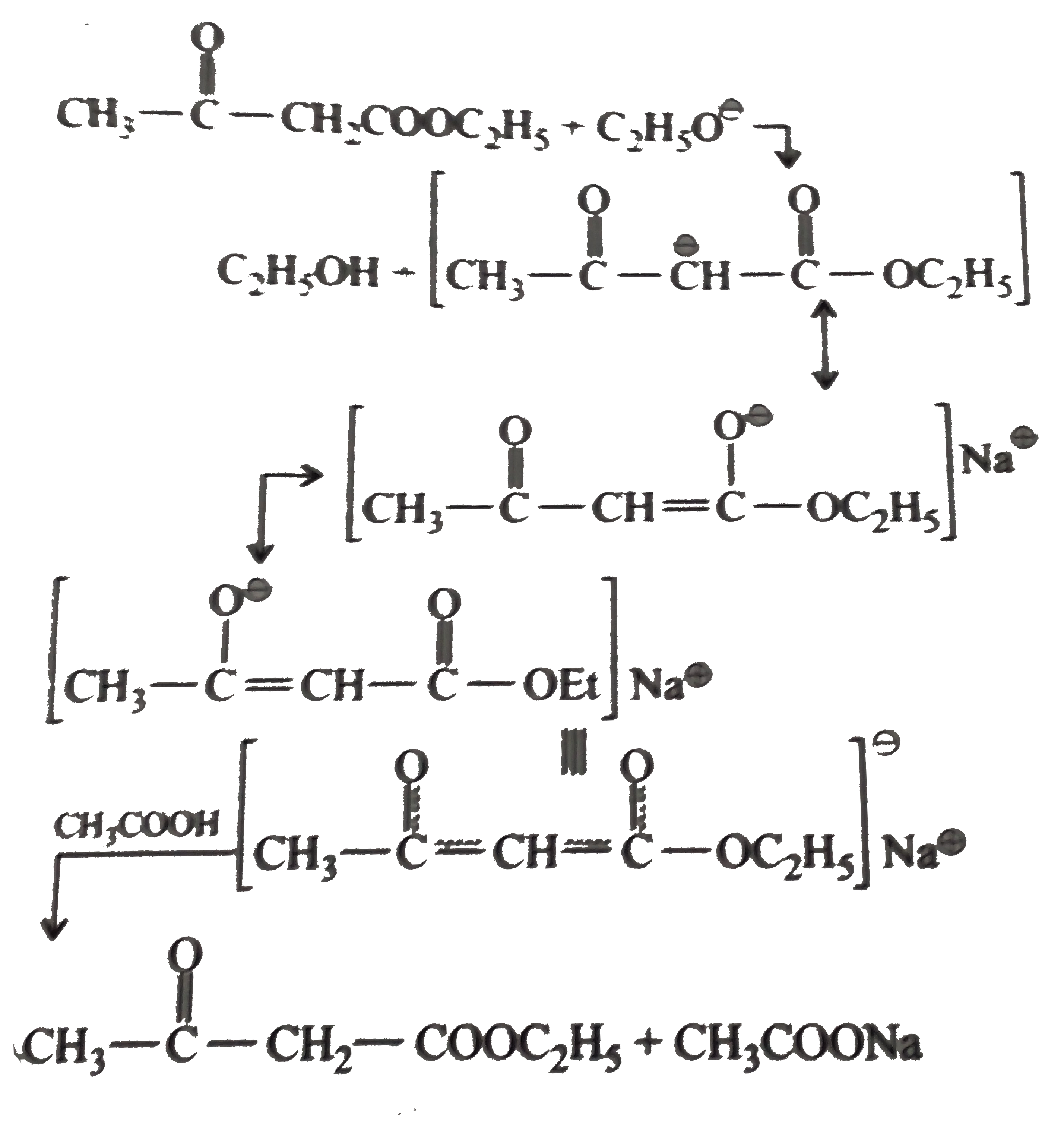
(1) 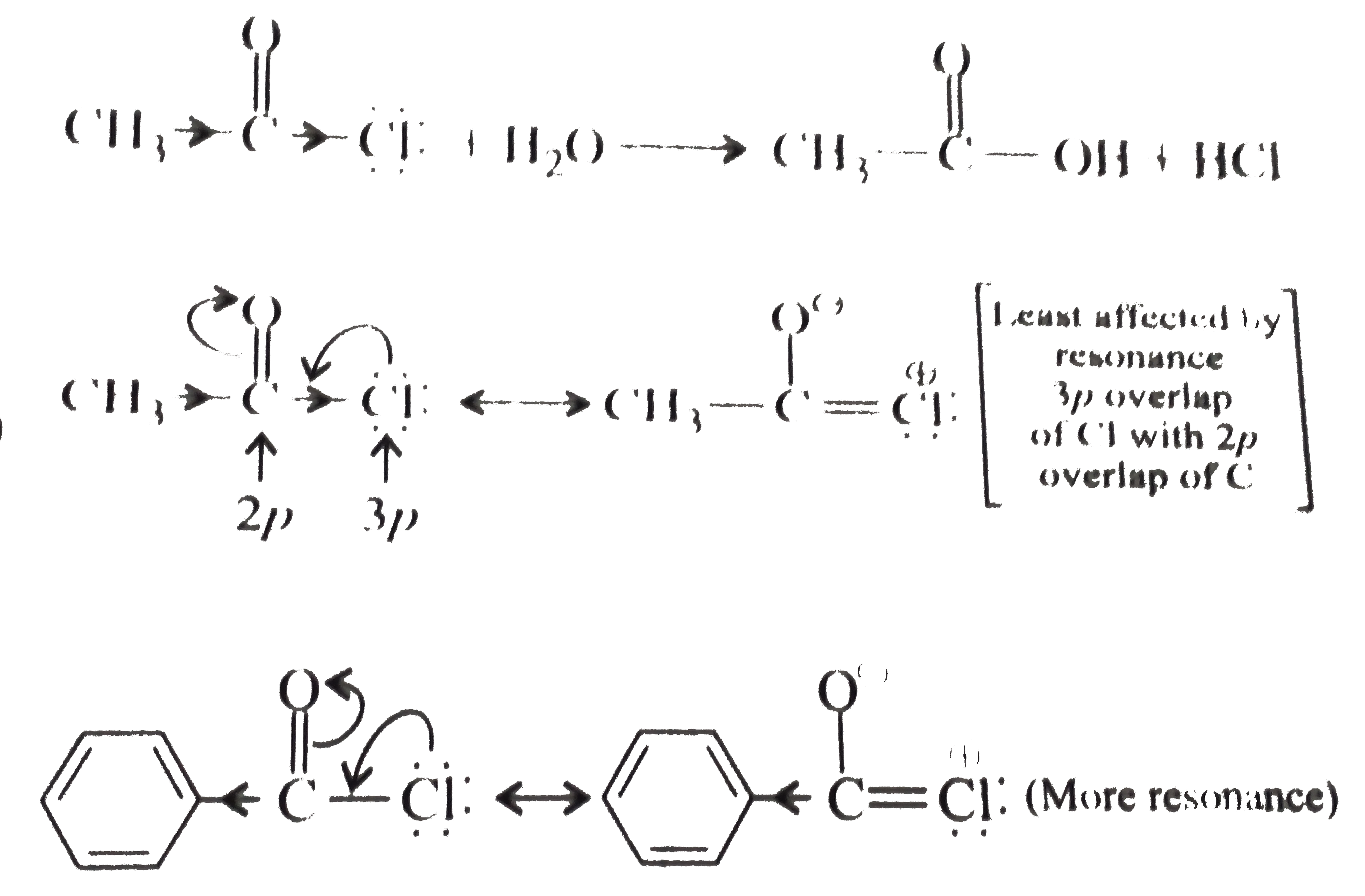
(2) 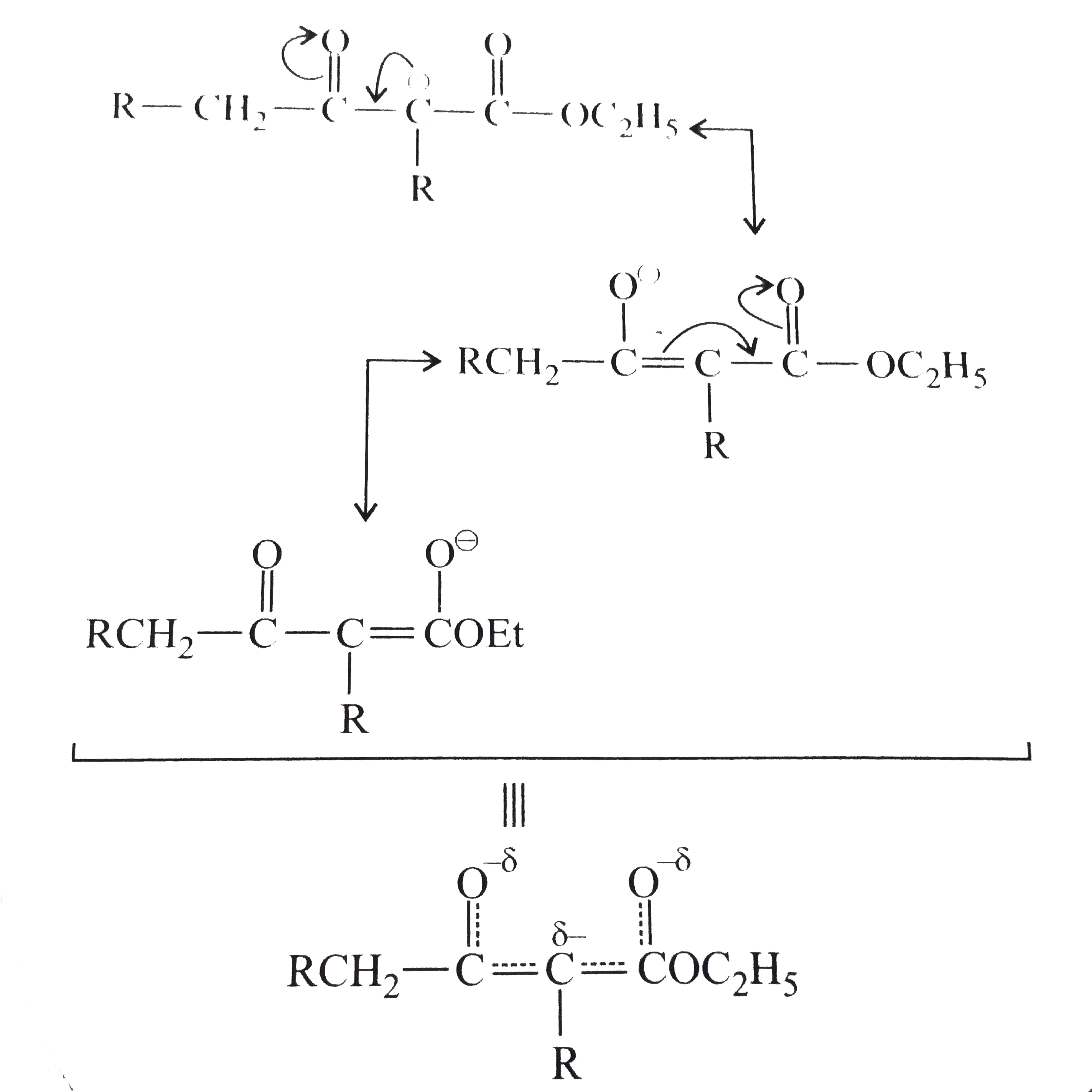
(2) is more resonance stabilised than (1) due to (−I) effect of (Ph) group. So (C=Cl) bond is formed and os difficult tp hydrolyse by H2O.
Hence, acetyl chloride is hydrolysed rapidly.
( c) Because their enolate anions are more stabilised by resonance, their negative charge is delocalised into two carbonyl groups.
Topper's Solved these Questions
- CARBOXYLIC ACIDS AND THEIR DERIVATIVESBOOK - CENGAGE CHEMISTRYCHAPTER - CARBOXYLIC ACIDS AND THEIR DERIVATIVESEXERCISE - Exercises (Subjective)
19 Videos
- CARBOXYLIC ACIDS AND THEIR DERIVATIVESBOOK - CENGAGE CHEMISTRYCHAPTER - CARBOXYLIC ACIDS AND THEIR DERIVATIVESEXERCISE - Exercises (Linked Comprehension)
34 Videos
- CARBOXYLIC ACIDS AND THEIR DERIVATIVESBOOK - CENGAGE CHEMISTRYCHAPTER - CARBOXYLIC ACIDS AND THEIR DERIVATIVESEXERCISE - Exercises Archives (Analytical And Descriptive)
34 Videos
- BIOMOLECULES, POLYMERS AND CHEMISTRY IN EVERYDAY LIFEBOOK - CENGAGE CHEMISTRYCHAPTER - BIOMOLECULES, POLYMERS AND CHEMISTRY IN EVERYDAY LIFEEXERCISE - QUESTION BANK
8 Videos
- CHEMICAL KINETICSBOOK - CENGAGE CHEMISTRYCHAPTER - CHEMICAL KINETICSEXERCISE - Archives Subjective
23 Videos
Similar Questions
What happens when?
(i) Acetamide is heated with bromine and caustic potash.
(ii) Acetyl chloride reacts with water.
(iii) Acetyl chloride is distilled with sodium acetate.
(iv) Acetamide reacts with nitrous acid.
(v) Acetamide reacts with phosphorus pentoxide.
(vi) Oils and fats are heated with NaOH.
(vii) Acetyl chloride reacts with ethyl alcohol.
(viii) Acetic acid is treated with P2O5 .
(ix) Urea is heated.
(x) Conc. HNO3 is added to concentrated urea solution.
(xi) Urea is heated with nitrous acid.
(xii) Urea is heated with sodium hydroxide solution.
(xiii) Urea is heated with acetyl chloride.
(xiv) The solution containing potassium cyanate and ammonium sulphate is evaporated to dryness.
(xv) Ammonia and carbon dioxide mixture is heated under pressure
View SolutionExplain why
(a) the dipole moment of chlorobenzene is lower than that of cyclohexyl chloride ?
(b) alkyl halides, though polar, are immiscible with water ?
(c) vinyl chloride is unreactive in nucleophilic substitution reactions ?
(d) neopentyl bromide undergoes nucleophilic substitution reactions very slowly ?
(e) 3-bromocyclohexane is more reactive than 4- bromocyclohexane in hydrolysis with aqueous NaOH ? (f) tert butyl chloride reacts with aqueous sodium hydroxide by SN1 mechanism while n-butyl chloride reacts by SN2 mechanism.
(g) Grignard reagents should be prepared under anhydrous conditions ?
View Solution
Knowledge Check
The isomer of C5H13N'A on reaction with nitrous acid gives-2- Methyl -2- butanol the isomer 'B' on reaction with acetyl chloride gives N- ethyl -N- isopropyl acetamide Whereas isomer 'C' have no reaction with acetic anhydride which of the following are A, B and C ?
A2-methyl -2- butanamine N-ethyl-2- propanamine N- ethyl - N- methyl ehtanamineB2-Methyl -1- butanamine N- ethyl -2- propanamine and N,N- dimethyl ethanamineC2-methyl - 1- butanamine N- ethyl -2- propanamine and N,N- dimethyl ethanamineD20 Methyl- 2- butanamine N- methyl -2- butanamine and N- ethyl -N- methyl ethanamineAmides undergo hydrolysis to yield carboxylic acid plus amine on heating in either aqueous acid or aqueous base. The conditions required for amide hydrolysis are more severe than those required for the hydrolysis of esters, anhydrides or acid chlorides, but the mechanism is similar (nucleophilic acyl substitution). Nucleophilic acyl substitutions involve a tetrahedral intermediate, hence these are quite different from alkyl substitution
(RCH2BrNaCN−−−→RCH2CN)
which involves a pentavalent intermediate or transition state. One of the important reactions of esters is their reaction with two equivalent of Grignard reagent to give tertiary alcohols.
For which functional derivative of carboxylic acids, acidic hydrolysis is the fastest?AAcid chloridesBAcid amidseCAcid anhydridesDEsters
(a) Give the Claisen ester condensation product of ethyl butanoate.
(b) Why does the Claisen ester condensation of ethyl-2-methyl propanoate (I) not take place ?
( c) Why does Claisen condensation of (I) take place by the use of Ph3CӨNa⊕ as a base ?
View SolutionHow does urea react with?
(a) Nitrous acid,
(b) Dilute NaOH,
(c) Sodium hypobromite,
(d) Malonic ester,
(e) Hydrazine,
(t) Acetyl chloride,
(g) Succinic acid,
(h) Acetoacetic ester.
View Solution(i) Give the mechanism for the reaction of acetyl chloride with ethyl alcohol.
(ii) Give the mechanism for the Hofmann bromamide reaction.
(iii) Give the mechanism of estrification
(iv) Give the mechanism of basic hydrolysis of an ester.
or
Give the mechanism of saponification.
(v) Give the mechanism of acid hydrolysis of an ester.
View SolutionExplain the following:
(a) More metal fluorides are ionic in nature than metal chlorides.
(b) Perchloric acid is a stronger acid than sulphuric acid.
(c ) Fluorine does not undergo disproportionation reactions but other halogens do.
View SolutionAccount for the following :
(i) pKb of aniline is more than that of methylamine .
(ii) Ethylamine is soluble in water, whereas aniline is not.
(iii) Methylamine in water reacts with ferric chloride to precipitate hydrated ferric oxide .
(iv) Although amino group is o- and p-directing in aromatic electrophilic substitution reactions, aniline on nitration gives a substantial amount of m-nitroaniline.
(v) Aniline does not undergo Friedel-Crafts reaction.
View SolutionAnswer the following :
(i) Phenol is more acidic than ethyl alcohol.
(ii) Phenol is an acid but does not react with NaHCO3.
(iii) Although phenoxide ion has more number of resonating structures than benzoate ino, benzoic acid is stronger acid than phenol . Why ?
(iv) Name the phenol with molecular formula C7H8O which on treatment with Br2 water readily gives a precipitate of C7h5OBr3.
(v) Unlike phenol, 2,4-dinitrophenol and 2,4,6-trinitrophenol are soluble in aqueous sodium carbonate solution.
(vi) Phenol has higher boiling than toluence. although they have almost the same molecular mass.
(vii)Ortho nitro phenol is steam volatile while para nitro phenol is not.
(viii) In Kolbe's reaction, instead of phenol, phenoxide ion is treated with CO2.
(ix) Nucleophilic substitution reactions are not very common in phenols.
(x) The dipole moment of phenol is smaller than that of methanol.
View Solution
